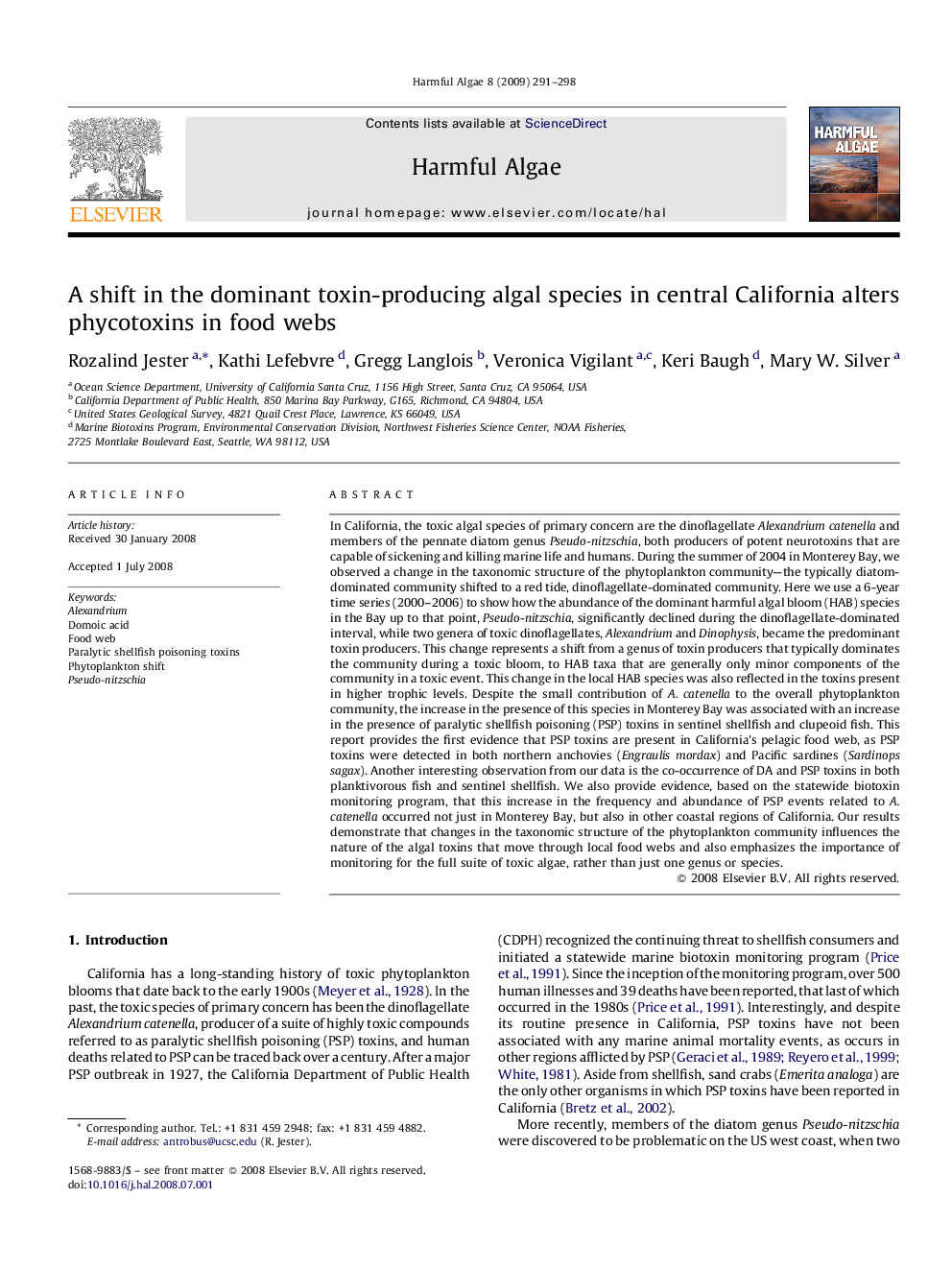| Article ID | Journal | Published Year | Pages | File Type |
|---|---|---|---|---|
| 4545896 | Harmful Algae | 2009 | 8 Pages |
In California, the toxic algal species of primary concern are the dinoflagellate Alexandrium catenella and members of the pennate diatom genus Pseudo-nitzschia, both producers of potent neurotoxins that are capable of sickening and killing marine life and humans. During the summer of 2004 in Monterey Bay, we observed a change in the taxonomic structure of the phytoplankton community—the typically diatom-dominated community shifted to a red tide, dinoflagellate-dominated community. Here we use a 6-year time series (2000–2006) to show how the abundance of the dominant harmful algal bloom (HAB) species in the Bay up to that point, Pseudo-nitzschia, significantly declined during the dinoflagellate-dominated interval, while two genera of toxic dinoflagellates, Alexandrium and Dinophysis, became the predominant toxin producers. This change represents a shift from a genus of toxin producers that typically dominates the community during a toxic bloom, to HAB taxa that are generally only minor components of the community in a toxic event. This change in the local HAB species was also reflected in the toxins present in higher trophic levels. Despite the small contribution of A. catenella to the overall phytoplankton community, the increase in the presence of this species in Monterey Bay was associated with an increase in the presence of paralytic shellfish poisoning (PSP) toxins in sentinel shellfish and clupeoid fish. This report provides the first evidence that PSP toxins are present in California's pelagic food web, as PSP toxins were detected in both northern anchovies (Engraulis mordax) and Pacific sardines (Sardinops sagax). Another interesting observation from our data is the co-occurrence of DA and PSP toxins in both planktivorous fish and sentinel shellfish. We also provide evidence, based on the statewide biotoxin monitoring program, that this increase in the frequency and abundance of PSP events related to A. catenella occurred not just in Monterey Bay, but also in other coastal regions of California. Our results demonstrate that changes in the taxonomic structure of the phytoplankton community influences the nature of the algal toxins that move through local food webs and also emphasizes the importance of monitoring for the full suite of toxic algae, rather than just one genus or species.
